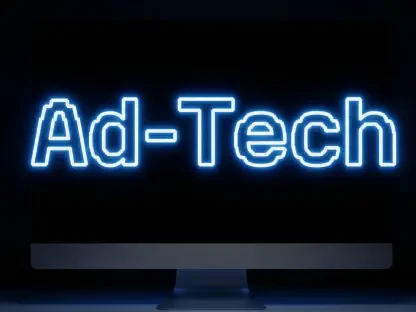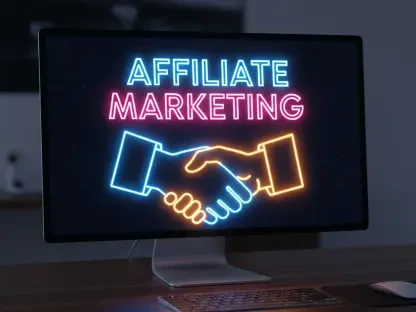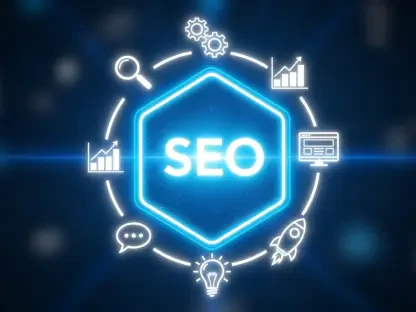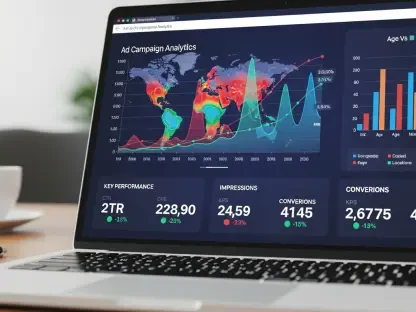I’m thrilled to sit down with Anastasia Braitsik, a globally recognized leader in SEO, content marketing, and data analytics. With her finger on the pulse of digital trends, Anastasia has extensive expertise in how influencer marketing intersects with broader marketing strategies. In this conversation, we dive into the evolving world of influencer marketing, exploring its shift toward authenticity, the impact of global markets, the power of data-driven decisions, and the challenges brands face in measuring success. We also touch on how public relations can amplify influencer efforts and what the future might hold for this dynamic field.
How would you describe influencer marketing to someone new to the concept, and why does it matter so much today?
Influencer marketing, at its core, is about partnering with individuals who have built trust and a following on social platforms to promote a brand or product. It’s like word-of-mouth marketing but amplified through digital channels. It matters today because people are more likely to trust a recommendation from someone they follow online than a traditional ad. With social media shaping how we connect and consume, influencers offer a direct line to engaged audiences, making this approach a key part of modern marketing.
What sets influencer marketing apart from traditional advertising when it comes to building connections with audiences?
Unlike traditional advertising, which often feels like a one-way broadcast, influencer marketing thrives on personal connection. Influencers speak directly to their followers in a way that feels relatable and authentic, often weaving brand messages into their everyday content. This creates a sense of trust and community that a billboard or TV commercial can’t replicate. It’s less about selling and more about storytelling, which resonates deeply with today’s audiences.
How have you seen the focus shift from celebrity influencers to micro and nano influencers, and what’s driving this change?
Over the past few years, there’s been a noticeable pivot from big-name celebrities to micro and nano influencers—those with smaller but highly engaged followings. The driving force is authenticity. Smaller influencers often have tighter-knit communities, and their recommendations feel more genuine compared to a celebrity who might endorse dozens of products. Brands are realizing that engagement and trust often outweigh sheer reach, especially when targeting niche markets or specific demographics.
Why do you think authenticity has become such a cornerstone of successful influencer campaigns?
Authenticity is everything now because audiences are incredibly savvy. They can spot inauthentic content a mile away, and over-commercialized posts just turn them off. When influencers stay true to their voice and share honest opinions—even about sponsored products—it builds credibility. People want to feel like they’re getting real advice, not just a sales pitch, and brands that prioritize this kind of transparency see much stronger loyalty and engagement.
How are brands using data and analytics to make smarter choices in influencer partnerships?
Data has become a game-changer in influencer marketing. Brands now dig into metrics like engagement rates, audience demographics, and even sentiment analysis to pick the right influencers. It’s not just about follower count anymore; it’s about who’s actually influencing behavior. Tools powered by AI can track campaign performance in real time, showing what’s working and what isn’t, so brands can adjust on the fly. This data-driven approach helps maximize impact and ensures budget isn’t wasted on mismatched partnerships.
What challenges do brands still face when trying to measure the true return on investment from influencer campaigns?
Measuring ROI remains a big hurdle because the impact of influencer marketing isn’t always straightforward. Likes and comments are easy to track, but they don’t always translate to sales or long-term brand value. Many brands struggle to connect the dots between a post and a purchase. Tools like affiliate links and promo codes help, but capturing the full picture—especially around brand awareness or loyalty—is still tricky. It often requires a mix of qualitative feedback and hard numbers to get a clearer sense of success.
How can public relations strategies amplify the impact of influencer marketing efforts?
PR and influencer marketing can be a powerful duo when aligned properly. PR distribution networks can take influencer content beyond social media, getting it featured in news outlets or blogs, which adds a layer of credibility. Meanwhile, PR teams can craft narratives through press releases or media interviews that echo the influencer’s message, creating a consistent story across channels. This synergy not only boosts reach but also makes the brand’s message feel more authoritative and trustworthy.
What role do you see emerging markets playing in the global growth of influencer marketing?
Emerging markets, especially in Asia and Africa, are reshaping the influencer landscape in a big way. With mobile-first internet access driving social media use, local influencers in these regions have gained massive traction by speaking directly to their communities in culturally relevant ways. Brands are tapping into these markets to connect with new audiences, and the growth is staggering. It’s not just about numbers; it’s about the unique perspectives and engagement these local voices bring to global campaigns.
How important are long-term partnerships between brands and influencers compared to one-off collaborations?
Long-term partnerships are becoming the gold standard because they allow for deeper storytelling and consistency. When an influencer works with a brand over time, their audience starts to see the relationship as genuine, not just a quick transaction. It also gives the influencer space to integrate the brand naturally into their content, which feels less forced. For brands, this builds a stronger, more reliable connection with the audience compared to one-off posts that can come across as random or purely promotional.
What’s your forecast for the future of influencer marketing over the next few years?
I think we’re heading toward even more integration of technology and creativity in influencer marketing. AI will continue to refine how we find influencers and measure impact, while virtual influencers and metaverse spaces could open up entirely new ways to engage audiences. At the same time, I expect a bigger push for sustainability and social impact—consumers will demand that influencers and brands align with meaningful causes. Overall, the focus will stay on authenticity, but how we define and deliver it will keep evolving with these emerging tools and values.









